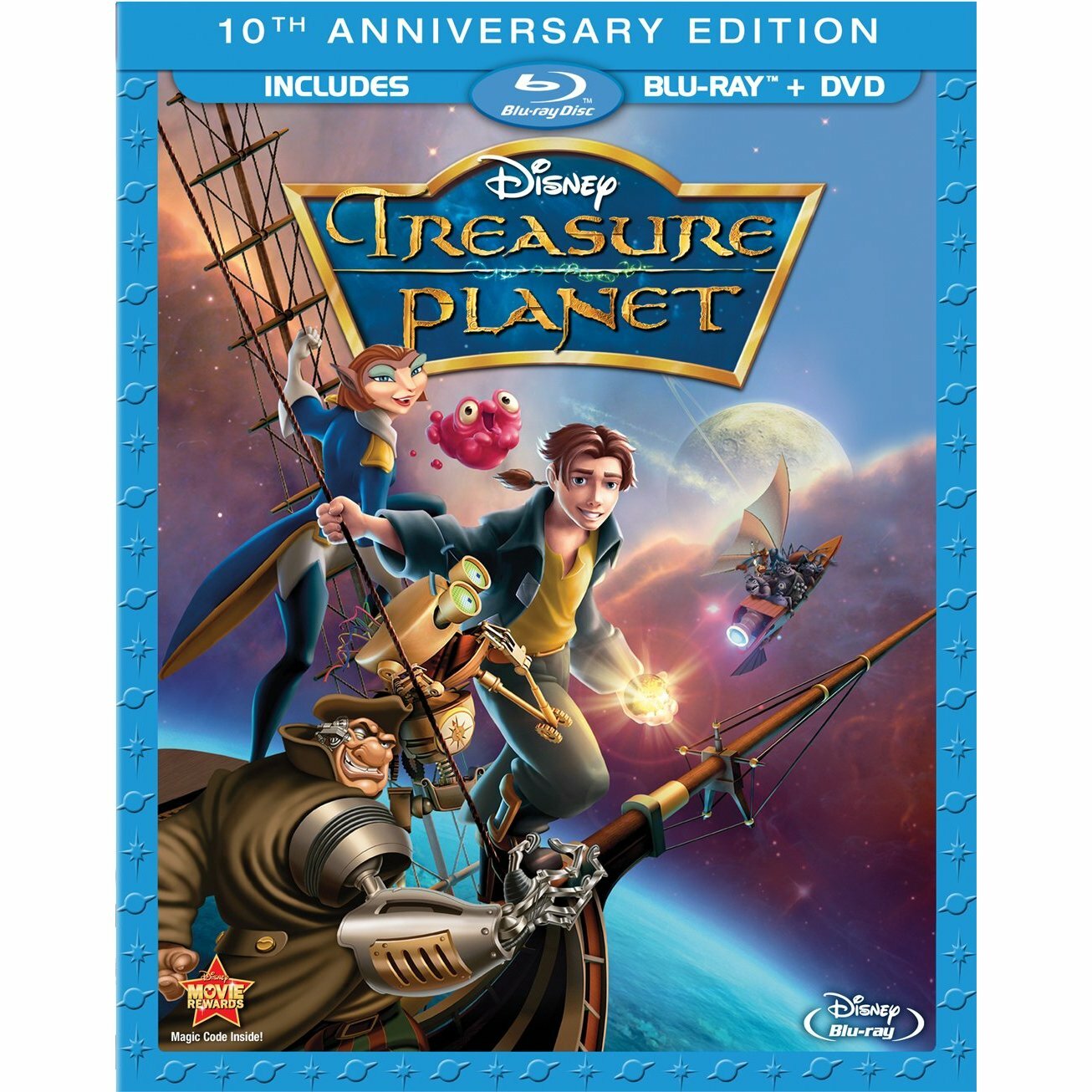“Treasure Planet” is a science fiction cartoon that was released in 2002. It ranks among Disney’s biggest flops. The question we should be asking is why.
It isn’t because Disney can’t do animated features, either. They have many billion dollar cartoons to prove the contrary point. The classic excuse is the animation style used in “Treasure Planet”, since the movie relied heavily on traditional animation plus some CGI. However, “Brother Bear” was mostly hand-drawn and earned about 250 million dollars the next year, so we can’t blame a lack of CGI.
It certainly isn’t because people aren’t interested in pirates. The Peter Pan live action movie is in the works as of this writing. The original Peter Pan movie was successful, and the live action reboot “Hook” did well. Even more telling is the “Pirates of the Caribbean” franchise that came out in 2003. That movie earned a couple hundred million dollars the very next year, so you can’t say “Treasure Planet” failed for lack of interest in pirates.
Is the problem that animated science fiction movies don’t do well? The movie “Planet 51”, a spoof of “Area 51”, earned over a hundred million dollars in 2009. “Home” came out in 2015. Arguably the cutest alien invasion ever, it earned almost 400 million dollars. “Jimmy Neutron: Boy Genius” earned over a hundred million dollars. Yet animated science fiction films are not guaranteed to earn money, as the “Titan A.E” and “Battle for Terra” flops demonstrate.
We now know that animated science fiction isn’t as guaranteed to make money as fun cutesy kid movies, though the infamous movie “Oogieloves” prove it is indeed possible. But we’re talking about a Disney move, people who set the standard for children’s films and animation in particular. (A lot of Pixar’s success is arguably from learning from Disney’s experts.) Disney’s successes like “Lilo and Stitch” and “Meet the Robinsons”, too, show Disney can be successful in animated scifi flicks released around the same time frame.
We’ve ruled out the excuse that the public just wasn’t interested in pirates or animated science fiction. Therefore, in order to understand why “Treasure Planet” failed, we have to look at the movie itself. The dark nature of the film is one issue; stylistically, it resembles “Black Cauldron”. It starts off with tragedy like Jim’s father dying, though “Bambi” shows such a thing won’t necessarily kill a film, pun intended. His mother losing her business and fleeing for her life is dark but not beyond hope. We get off on the adventure of Jim.
Was the space skateboarding too much? Maybe, but maybe not. Is it due to the very expensive software they tried to use to create the movie? Again, maybe and maybe not. The blame, I think, lies in the character Jar-Jar Binks. Excuse me, B.E.N., a crazy robot that acts and even looks, stylistically, like Jar-Jar Binks. The cutesy blob intended to be a pet/sidekick is another mistake they made, though that isn’t as bad as robotic Jar-Jar-Binks.
Another mistake is the odd mix of science fiction and Victorian ethos while overly emphasizing the Victorian side. This movie so wants to be steampunk before steampunk was popular, but it throws in too much science fiction to be plausible. (The breathable ether that makes pirates in space possible is a separate, critical element to the story.) Pirates with mechanical limbs work, as does a 17th century ship with solar sails. Laser shooting eyes don’t and talking robot in a world that doesn’t seem to have electricity doesn’t.



Comments